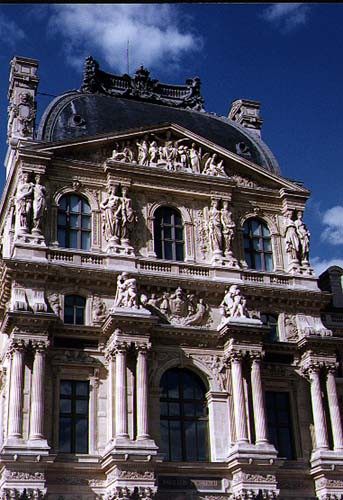It was Napoleon III who in the end finished the Louvre, thus completing the “Great Design” dreamt of by French kings over the centuries.
Napoleon I had already started the construction during the First Empire, building in the Tuileries and hoping to link the edifice to the Louvre palace, but he left it unfinished. As early as 1851, the future Napoleon III commissioned Visconti to continue the Tuileries building, thus aiming to create a residential palace combined with an administrative building on an imperial scale. The Tuileries was therefore to be reserved for the sovereigns and the Louvre palace would be devoted both to administrative departments and museum collections.
The “Conseil des bâtiments civils” agreed to carry out the project on 31st March, 1852, and building work was started on 25th July, 1853. Over 3,000 builders and 150 sculptors worked on the site for over 5 years. The houses between the two palaces were demolished by Haussmann. The Louvre-Tuileries junction was completed on the north side while the great gallery and its northern counterpart were granted wings each overlooking three courtyards. Following Visconti's death in 1854, Lefuel was put in charge of the site on 14th August, 1857, and the heavy construction work was formally inaugurated. Over the period from 1860 to 1865, Lefuel covered the building with a great deal of ornamentation and rebuilt the Flore Pavilion and the western part of the gallery where ticket offices were opened.
Visitors were led into the museum through the Denon pavilion and reached the floors by two new staircases (one being the stairs of the Victory of Samothrace) leading to the rooms exhibiting Italian and French paintings. During the Second Empire, the museum's collections were considerably enlarged with the addition of the Campana collection, the La Caze donation, and the purchases that were made during the Soult sale together with the excavations carried out by the French in the East. WIth a view to consolidating the Napoleonic dynasty, Napoleon III also created, in 1852, a museum devoted to the sovereigns of France and this was set up in the buildings of the Cour carré.
The Louvre's political functions were not abandoned and two State rooms were prepared for the opening of the parliamentary session.
Louvre Museum Second Empire


